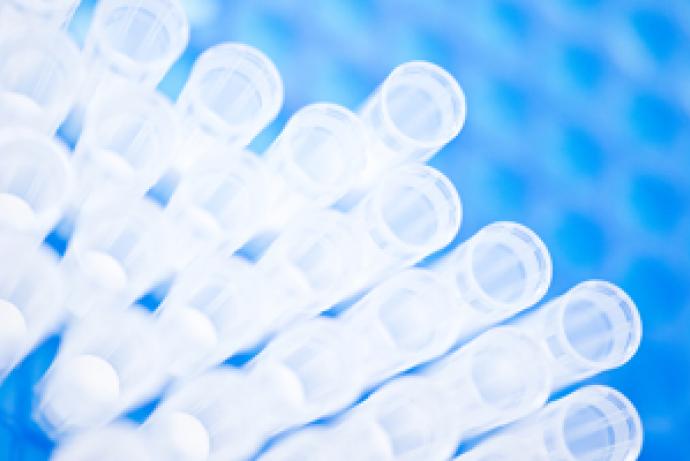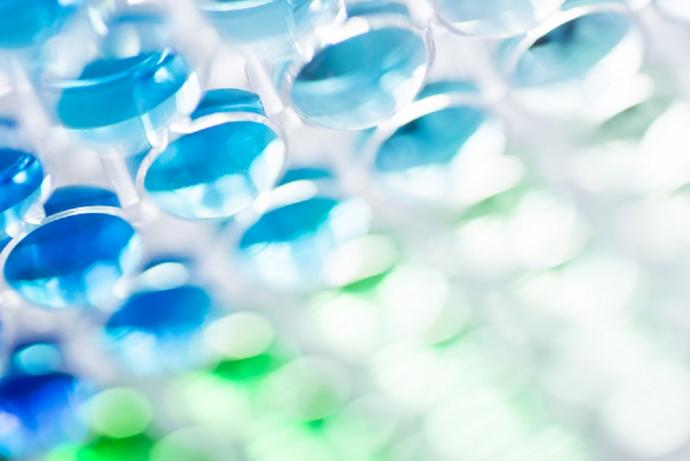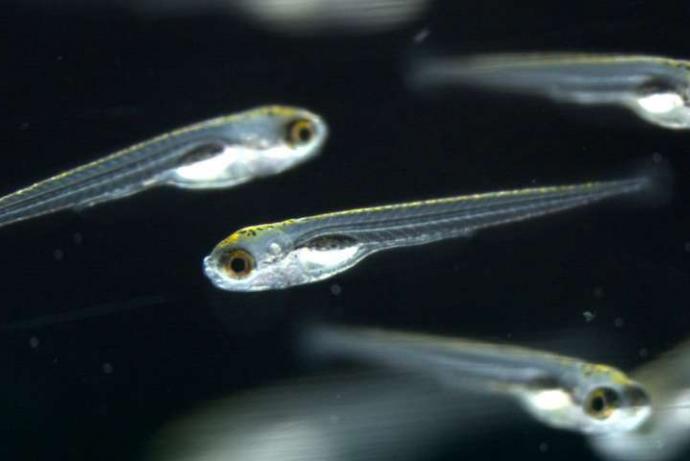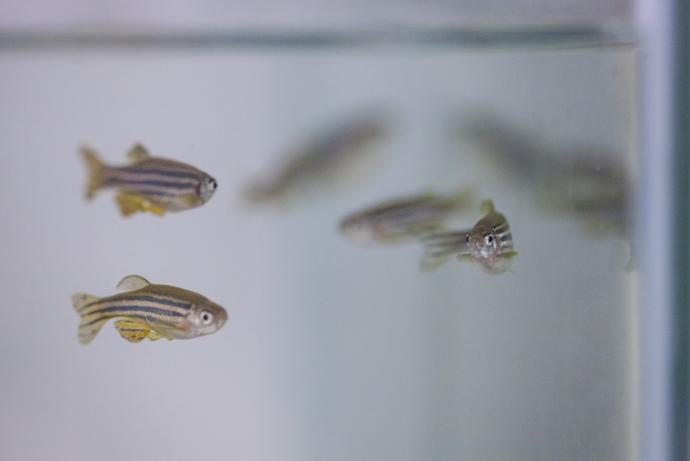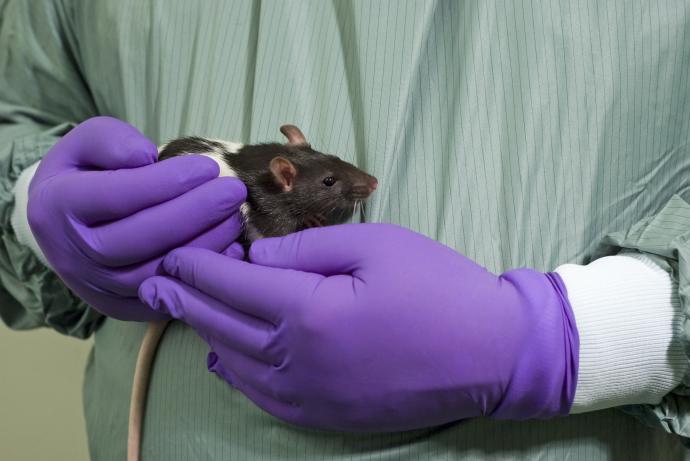Retinal 3D
The aim of this Challenge was to establish a physiologically-competent 3D human retinal cell model. The model needed to contain all of the major cell types of the retina and resemble key morphological and functional features which can easily be addressed with a panel of functional readouts.
To deliver this Challenge, a team led by Professor Lyle Armstrong from Newcells Biotech Ltd developed retinal organoids comprised of human induced pluripotent stem cells (hiPSCs) derived from healthy donors or patient samples and contain the key cell types of the retina. The retinal organoid model provides a reliable alternative to animal models with increased relevance to human health.
Publication
Chichagova, V. et al. (2023) “Incorporating microglia‐like cells in human induced pluripotent stem cell‐derived retinal organoids,” Journal of Cellular and Molecular Medicine, 27(3), pp. 435–445. Available at: doi.org/10.1111/jcmm.17670.
10 years of CRACK IT webinar: 3D retinal organoids – a vision of the future

In September 2021, we held a webinar highlighting the physiologically-competent and human-relevant 3D retinal cell model developed to address the Retinal 3D Challenge. Speakers included Dr Mike Nicholds (Newcells Biotech Ltd.), who led the team that delivered the Challenge, and Dr Stefan Kustermann (Roche), representing the Challenge Sponsors. The recording of the webinar is now available online, as part of our 10 years of CRACK IT celebrations.
Webinar
Newcells Biotech Ltd hosted a virtual thought leadership discussion on emerging technologies for applications in gene therapy (kidney & retina studies) on 8 September 2021.
Challenge completed
Through the Retinal 3D Challenge, the team at Newcells Biotech, led by Professor Lyle Armstrong, have generated retinal organoids from human induced pluripotent stem cells (iPSCs) to mimic physiological features of the retina in vivo.
Publication
Georgiou M, Chichagova V, Hilgen G et al. (2020). Room temperature shipment does not affect the biological activity of pluripotent stem cell-derived retinal organoids. PLoS One 15(6): e0233860. doi: 10.1371/journal.pone.0233860
Conference presentation
The Association for Research in Vision and Ophthalmology Annual Meeting (Hawaii, USA)
- Poster I: Using statistical models to identify key variables critical for generation of retinal organoids from iPSC.
- Poster II: Efficient generation of laminated and light responsive retinal organoids for use in toxicological assay.
Conference presentation
British Toxicology Society Annual Congress (Gateshead, UK)
Using statistical models to identify key variables critical for generation of retinal organoids from iPSC for further use in pharmacological and toxicological studies.
Conference presentation
3D Cell Models Congress (Berlin, Germany)
Phase 2 awarded
A team led by Professor Lyle Armstrong from Newcells Biotech Ltd has been awarded £1 million to deliver the project: 3D hiPSC derived laminated retinal model as a tool for toxicology studies.
Phase 1 awarded
Three Phase 1 Awards were made to project teams led by:
- Professor Michael Cheetham, University College London, £99,999.
- Professor Stefan Liebau, University of Tübingen, £99,982.
- Professor Majlinda Lako, Newcastle University, £99,982.
Challenge launched
Sponsored by Roche, Merck and Novartis, the Retinal 3D Challenge aims to establish a physiologically-competent human 3D retinal cell model that consists of all the major cell types of the retina and is predictive of human physiology. The model also needs to capture key morphological and functional features which can be easily addressed with a panel of functional readouts.
Background
Over 60 million people worldwide are blind (Zhang et al., 2012). One of the leading causes of blindness in the ageing population is Age Related Macular Degeneration. There is currently no cure for this debilitating condition.
The eye is a complex organ comprising three major structures: the cornea, the lens and the retina. For the cornea and to a minor extent for the lens, in vitro models are available that enable, for example, testing of compounds for their potential to induce corneal irritation.
For the retina, there are no adequate in vitro models mainly due to its complex structure which consists of multiple cells types, including glia, neurons and the retinal pigment epithelium cells (RPE). There are some simple preclinical models available - for example, retinal explant organotypic cultures from early postnatal rodents resemble the retinal morphology to a high degree and contain the relevant cell types including Müller cells and RPE. However, they do not fully mature when cultured in vitro and therefore their translation to the mature human retina is limited. Human tissue is not readily available (Caffe et al., 2000; Pinzón-Duarte et al., 2002) for these studies. Human-based in vitro models using primary or cell lines such as the RPE cell line ARPE19 (Dunn et al.,1996; Seigel et al.,1999) and the Müller cell line (MIO-M1) (Limb et al., 2002) do provide useful tools but again, their relevance to the mature human retina is limited.
Complex human stem cell-derived models (Gonzalez-Cordero et al., 2013) are beginning to emerge which form retinal spheroids in vitro but these resemble embryonic retinal development whereas mature phenotypes for example a ganglion cell can take up to 30 days to reach maturity. The spheroids often lack Müller and RPE cells which are key to a fully predictive model. Throughput is another concern as the generation and maintenance of these spheroids is often not amenable to industry use.
In summary, the currently available in vitro models have a number of limitations:
- They are typically based on a single cell type in culture and do not reflect the architecture of the mature human retina and the complex interplay between multiple cell types (e.g. photoreceptors, glial cells, endothelial cells, RPE cells).
- Integrated and functional measurements such as electrophysiology and high content imaging other than single cell behavior cannot typically be performed.
- Organotypic cultures of retina explants are typically not stable beyond a maximum of two to three weeks.
As a result of the current limitations, most pharmacological and toxicological studies to assess effects of drug candidates on the retina need to be performed in vivo. The degree of visual acuity and structure of the retina differs between animals and humans, reflecting the distinctive role of visual function between species (e.g. rats have more rods for low light scotopic vision, whilst humans have more cones for bright light phototopic vision, Jacobs et al., 2001). For models more representative of human visual function, it would therefore be highly desirable to have access to a human-relevant retinal cell model to support compound testing in vitro.
Many other retinal diseases have a genetic background and are lacking suitable animal models. Utilising patient-derived iPS retinal cell models could integrate a disease background and phenotype for compound testing which would address these concerns and provide the opportunity for the development of novel safety testing strategies.
Recent advances in the field of tissue engineering, such as by bioprinting, now provide the capability to address the development of a 3D model comprising the three major retinal cell types: Müller and microglia, neurons and RPE. This is the aim of this CRACK IT Challenge.
Such a model would enable the in vitro assessment of drug candidate-induced alterations on the cellular phenotypes and functions which have relevance in vivo, and which can be used not only for pharmacological and early toxicological assessment but also for disease modelling. This would also provide the potential for a leaner early drug development programme for ophthalmology indications as, for example, optimisation related to mechanistic toxicity could be performed earlier in the cycle, shortening preclinical development and enabling faster time to the clinic.
3Rs benefits
Worldwide, there are currently more than 600 R&D projects in the field of ophthalmology and the market for therapies targeting retinal disorders is expected to grow to $14.8 billion by 2022 (Pharmaventures, 2015). The majority of studies for efficacy and safety testing in opthalmological drug development are performed in animals (mainly rodents and rabbits) that provide both functional and histological readouts. For example, in vivo studies investigating ocular safety of new compounds use at least 20 animals per compound.
The proposed new model set by the Retinal 3D Challenge has the potential to replace the use of animals in the discovery of new opthalmologic drugs as well as screen out a significant number of compounds that would fail later in the pipeline, thus avoiding unnecessary animal use. The in vivo studies that are still required will be designed with improved mechanistic toxicological and pharmacological knowledge to enable more relevant dosing and group numbers and potentially deliver more refined humane endpoints.
Phase 1 winners
- Professor Michael Cheetham, University College London, £99,999.
- Professor Stefan Liebau, University of Tübingen, £99,982.
- Professor Majlinda Lako, Newcastle University, £99,982.
Phase 2 winner
Project team lead by:
Professor Lyle Armstrong, Newcells Biotech Ltd £1,000,000.
Full Challenge information
Assessment information
Assessing retinal drug toxicity as a potential side effect is a critical step in drug development. Existing animal models can cause suffering and do not fully recapitulate the complex structure of the human retina. This Challenge aimed to develop a reproducible, commercially available, and human-relevant 3D retinal organoid model to improve the assessment of retinal toxicity.
A team led by Professor Lyle Armstrong from Newcells Biotech Ltd, with support from the Challenge Sponsors Roche, Merck and Novartis, developed retinal organoids comprised of human induced pluripotent stem cells (hiPSCs) derived from healthy donors or patient samples and contain the key cell types of the retina. This mixture of cell types present reproduces the complex structure and the interplay between the different types of cells found within the human retina.
The retinal organoid model provides a reliable alternative to animal models with increased relevance to human health. The technology has the potential to be applied across toxicology, gene therapy, and disease modelling, reducing the need for preclinical in vivo studies. Additionally, creating and maturing differentiated cell lines for conventional in vitro assays in-house can take months, whereas this product has regular batch release, allowing for reduced waiting times.
For more information about the 3D retinal organoid product please visit the product page on the Newcells Biotech website.
An in vitro, light responsive retina model for better prediction of in vivo outcomes
A team from Newcells Biotech, led by Professor Lyle Armstrong, have generated retinal organoids from human induced pluripotent stem cells (iPSCs). The organoids contain key retinal cell types, including rod and cone photoreceptors, bipolar, amacrine and horizontal cells, retinal ganglion cells and Muller glia, and mimic physiological features of the retina in vivo. They can be used for a wide variety of applications, including gene therapy (AAV), toxicology and disease modelling.
Using reliable, functional iPSC-derived retinal organoids may reduce or eliminate the need for in vivo studies in preclinical retinal research. They are more effective for in vitro to in vivo extrapolation than existing in vitro retinal models as advanced, light responsive models.
Features





Access the technology
For more information and to contact Newcells Biotech, please go to the Newcells Biotech website.

